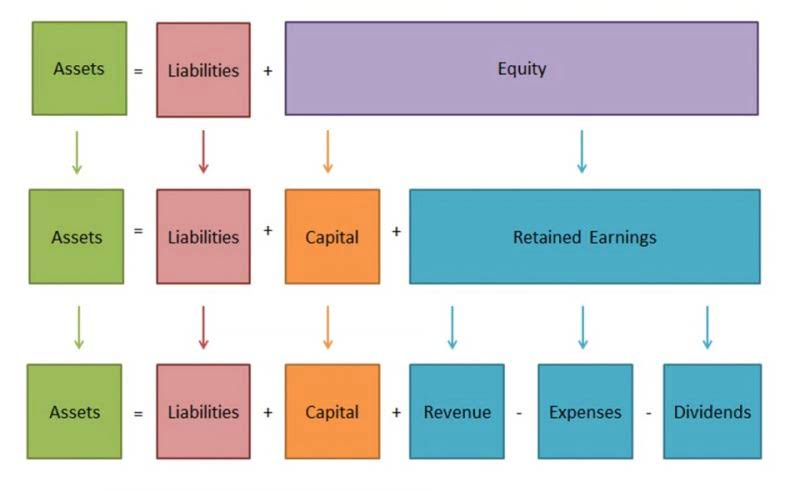
It’s worthwhile to create hypotheses about how the month was before generating financial statements to see how much your assumptions align with the actual financial performance. Below is a breakdown of the main differences between the two trial balances. The adjusting entry is made because there isn’t a corresponding financial transaction to account for this activity. When one of these statements is inaccurate,the financial implications are great. When one of these statements is inaccurate, the financial implications are great. It is so amazing how simplistic you’ve made understanding accounting for me.

Understanding Special Purpose Entities in Financial Management
Those balances are then reported on respective financial statements. Service Revenue had a $9,500 credit balance in the trial balancecolumn, and a $600 credit balance in the Adjustments column. To getthe $10,100 credit balance in the adjusted trial balance columnrequires adding together both credits in the trial balance andadjustment columns (9,500 + 600). Once all accounts have balances in the adjusted trialbalance columns, add the debits and credits to make sure they areequal.

Company
Unearned revenue had a credit balance of $4,000 in the trial balance column, and a debit adjustment of $600 in the adjustment column. Remember that adding debits and credits is like adding positive and negative numbers. This means the $600 debit is subtracted from the $4,000 credit to get a credit balance of $3,400 that is translated to the adjusted trial balance column. Presentation differences are most noticeable between the two forms of GAAP in the Balance Sheet. Under US GAAP there is no specific requirement on how accounts should be presented.

Enhancing financial statement accuracy
Each transaction must be documented to reflect its impact on the company’s financial position. Once the ledger is complete, the ending balance of each account is extracted with attention to detail to avoid discrepancies. Assets, representing the resources owned by a company, are listed first, usually in order of liquidity. Current assets like cash and accounts receivable precede non-current assets such as property, plant, and equipment.
- You have been tasked with determining if this transition is appropriate.
- Managers and accountants can use this trial balance to easily assess accounts that must be adjusted or changed before the financial statements are prepared.
- An adjusted trial balance finalizes account balances and is the last step before generating key financial statements.
- Depreciation is a non-cash expense identified to account for the deterioration of fixed assets to reflect the reduction in useful economic life.
- They also cover deferrals like prepaid expenses and unearned revenue, as well as non-cash items like depreciation and amortization.
Note that only active accounts that will appear on the financial statements must to be adjusted trial balance order listed on the trial balance. If an account has a zero balance, there is no need to list it on the trial balance. So I know my adjusted trial balance is right because my debits and my credits are equal. It’s always going to come out the same as long as your debits and your credits are the same. In these columns we record all asset, liability, and equity accounts.
The first thing you should contra asset account do with a completed adjusted trial balance is review the most important balances and compare them against past periods. Look at your cash balance to see whether it’s trending up or down, then check your top expense categories to understand whether they’re increasing over time. After making the adjusting entries, the debits and credits are still equal—an indication that the work was completed properly. Adjusting entries, like depreciation or unearned revenue, are necessary to ensure the trial balance reflects all financial activities. Using Paul’s unadjusted trial balance and his adjusted journal entries, we can prepare the adjusted trial balance.
- InterestReceivable did not exist in the trial balance information, so thebalance in the adjustment column of $140 is transferred over to theadjusted trial balance column.
- After a company posts its day-to-day journal entries, it can begin transferring that information to the trial balance columns of the 10-column worksheet.
- An adjusted trial balance is a list of all accounts in the general ledger, including adjusting entries, which have nonzero balances.
- An income statement shows the organization’s financialperformance for a given period of time.
- If you combine these two individual numbers ($4,665 – $100), you will have your updated retained earnings balance of $4,565, as seen on the statement of retained earnings.
- But, this is done after the the adjusting entries have been recorded and posted to the ledger.

Both US-based companies and those headquartered in other countries produce the same primary financial statements—Income Statement, Balance Sheet, and Statement of Cash Flows. After incorporating the adjustments above, the adjusted trial balance would look like this. After incorporating the $900 credit adjustment, the balance will now be $600 (debit). Non-monetary transactions are just as important a part of financial reporting as monetary transactions. Not only do they give you a clearer vision of how your day-to-day operations impact the bottom line, but it keeps you up-to-date on potential tax deductible expenses. Starting with depreciation, he knows that he needs to account for $750 of depreciation per month.
These adjustments usually include adjustments for prepaid and accrued expenses along with non-cash expenses like depreciation. These adjustments are added to the unadjusted trial balance on the accounting worksheet and the new adjusted TB is prepared. There are five sets of columns, each set having a column for debit and credit, for a total of 10 columns. The five column sets are the trial balance, adjustments, adjusted trial balance, income statement, and the balance sheet.
This is a reminder that the income statement itself does not organize information into debits and credits, but we do use this presentation on a 10-column worksheet. Looking at the income statement columns, we see that all revenueand expense accounts are listed in either the debit or creditcolumn. This is a reminder that the income statement itself doesnot organize information into debits and credits, but we do usethis presentation on a 10-column worksheet. Basically, each one of https://www.bookstime.com/ the account balances is transferred from the ledger accounts to the trial balance. All accounts with debit balances are listed on the left column and all accounts with credit balances are listed on the right column.